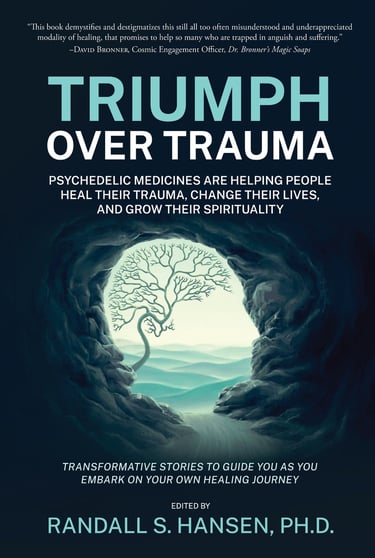Do You Have a Sitting Disorder? The Power of Exercise Snacks
Does this scenario sound familiar?
Wake up and start the day sitting down for breakfast or morning coffee/tea; sitting while scrolling through social media; sitting in the car, bus, or train to work; sitting at a desk or computer screen; sitting for lunch; sitting for afternoon work; sitting on the commute home; sitting at dinner; sitting after dinner, reading a book or watching a screen; going to bed. Add in a smart home in which we can bark or send commands – while sitting.
You may not be aware of how sedentary your life has become, but most studies show that the average person in Western economies sits anywhere from 10 to 12 hours a day.
We are experiencing a sitting/sedentary lifestyle pandemic, partly fueled by the covid pandemic.
Pandemic? How can sitting be a cause for alarm? It’s not the sitting; it’s the HOURS and HOURS of sitting, every day, for weeks and weeks, months on end. We are sitting or lying down without interruption for the majority of the day.
Some people are calling it the Sitting Disease because of the dire health consequences, while others are saying that sitting is the new smoking. There is no question that as a whole, we are sedentary for far too long – every day.
Perhaps the two biggest crises in the world today are malnutrition from imposter foods and health consequences from lack of daily movement.
The solutions to both issues are simple. With food, the solution is a return to home cooking using real foods as ingredients while avoiding as many ultra-processed (imposter) and sugary foods and beverages as possible, which is the focus of The Healing Revolution Diet. You can find articles to help improve your nutrition here: https://randallshansen.com/nutrition
With our lack of movement, the solution is a focus on inserting movement throughout the day, every day. How? Please keep reading.
Sedentary Sitting Statistics
How much do you sit? Probably a lot more than you think, based on this research:
More than a quarter (28 percent) of all adults globally are considered physically inactive.
Physically active jobs have declined steadily, to about 20 percent of all jobs.
One study found that adults reported a mean of 9.5 hours per day of sedentary time.
That same study found that 82 percent of leisure time was spent sedentary – mainly watching television/videos or engaged in internet/computer use.
Another study found that people who spent much of their day sitting at work had a 16 percent higher risk of dying from any cause – and a 34 percent higher mortality risk from cardiovascular disease compared with those who didn’t spend as much time sitting.
Another study found that participants who sat more than 11 hours a day had a 57 percent higher risk of dying than those who sat less than nine and a half hours a day.
A Healthline article states that the typical office worker may spend up to 15 hours per day sitting.
After just 20 minutes of being sedentary, your metabolism slows.
Moving after meals and snacks lowers blood sugar levels.
People who sit for 10+ hours a day have a higher risk of developing dementia.
Too much sitting can be just as bad for your mental health as for your physical health.
The Solution to Sitting Disorder
The solution to this issue is not quitting your job, nor is it pounding out the workouts on days off.
Instead, the solution is taking exercise breaks – what some of us are calling Exercise Snacks – throughout the day. These breaks only need to be a few minutes of movement, but it is essential that you add in as many as possible throughout the day.
Some people set a timer for 60-70 minutes and take a 5-minute break every hour. (A longer break or two, if you have the time, is even better.)
Mix up your movement. Here are some ideas for Exercise Snacks:
Walk up and down a few flights of stairs;
Take a walk to the farthest bathroom;
Simply stand, hop, do a few jumping jacks;
Walk around the block;
Perform a few sets of planks, sit-ups, or squats;
Use hand weights (or heavy cans/bottles) for upper body exercise;
Shoot a few baskets, whether indoors or out;
Play a game of Ping-Pong;
Take housework breaks (such as a quick sweep, dusting, or washing dishes);
Play a favorite song and dance to it;
Take a child or pet for a walk;
Jog in place;
Stand and fidget while making phone calls
Other ideas for adding movement at the beginning or end of your day involve changing up your commute. Perhaps ride a bike to work (or partly to work); park further away from the office; get off on a more distant stop on mass transit and walk the remainder.
Another option is using a standup desk for part of the workday or even investing in a desk “walking” treadmill.
See more ideas and examples for exercising in the resources list at the end of the article.
Final Thoughts on Beating Sitting Disorder, Using Exercise Snacks
Just move, every hour ideally, but as often as you can. Even simply standing for phone calls and checking emails is better than sitting. Mix up the movements for more fun and variety.
Every study shows the dangers of being sedentary, especially given the vast amount of spent each day sitting.
Every study also shows we can reverse these negative consequences by moving throughout the day – and that moving throughout the day is much more beneficial than cramming in all that movement on the weekend or after work.
Finally, remember that proper nutrition and diet are still the most important factors in your health, but exercise is a close second. You have to improve your diet AND make an effort to add more exercise snacks to your day.
If you were not standing while reading this article, it’s time to get up and move around!
Additional Sedentary Lifestyle and Exercise Snack Resources


Dr. Randall Hansen is an advocate, educator, mentor, ethicist, and thought-leader... helping the world heal from past trauma. He is founder and CEO of EmpoweringSites.com, a network of empowering and transformative Websites, including EmpoweringAdvice.com.
He is the author of the groundbreaking Triumph Over Trauma: Psychedelic Medicines are Helping People Heal Their Trauma, Change Their Lives, and Grow Their Spirituality and the well-received HEAL! Wholeistic Practices to Help Clear Your Trauma, Heal Yourself, and Live Your Best Life.
Dr. Hansen's focus and advocacy center around true healing ... healing that results in being able to live an authentic life filled with peace, joy, love. Learn more by visiting his personal Website, RandallSHansen.com. You can also check out Dr. Randall Hansen on LinkedIn.






